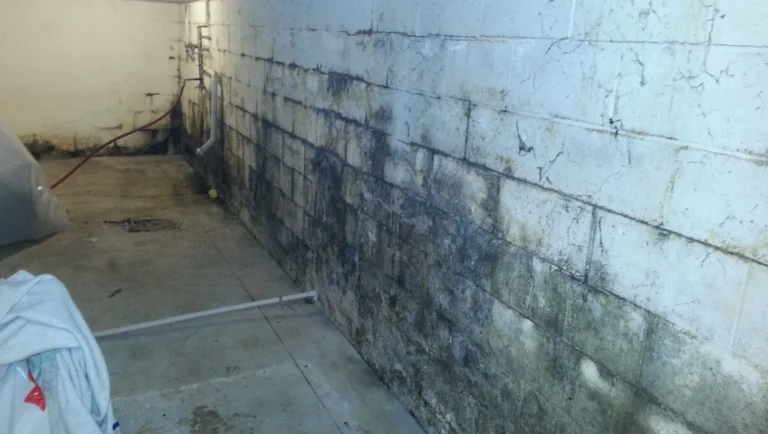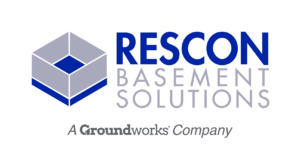Basement Mold Removal
Sep 17, 2024
Welcome to our guide on basement mold removal! Dealing with mold in your basement can be a nightmare, both for your health and the integrity of your home. In this article, we will delve into the dangers of basement mold, how to identify it, steps to effectively remove it, choosing the right products for the job, and essential tips for preventing its return. Let’s tackle this pesky problem head-on together!
Basement Mold Removal
Basement mold removal is a crucial task for any homeowner to maintain a safe and healthy living environment. Mold growth in the basement can not only cause unpleasant odors but also lead to respiratory issues and exacerbate allergies. Addressing mold promptly is essential to prevent it from spreading further within your home.
Removing basement mold requires thorough cleaning and disinfection of affected surfaces. It’s important to wear protective gear, such as gloves and a mask, while handling mold-infested areas. Proper ventilation is key during the removal process to prevent inhaling harmful spores.
Whether you’re dealing with black mold or mildew, taking swift action is vital. Ignoring the problem can result in structural damage and pose health risks to you and your family. By following effective removal techniques, you can restore your basement to a clean and safe space once again.
Stay tuned as we explore the steps involved in removing basement mold, including identifying its presence, choosing suitable products for eradication, and implementing preventive measures for long-term success against mold growth!
Understanding the Dangers of Basement Mold
Basement mold is not just an unsightly nuisance; it can also pose serious risks to your health and property. Mold spores can become airborne, leading to respiratory issues like coughing, sneezing, and even exacerbating conditions such as asthma or allergies. Inhaling mold spores over time may cause more severe health problems.
Aside from health concerns, basement mold can also compromise the structural integrity of your home. Mold growth weakens building materials like wood and drywall, potentially leading to costly repairs down the line. The presence of mold in your basement could lower the value of your property if left unchecked.
Moreover, a damp environment that fosters mold growth can attract pests like insects and rodents seeking moisture and shelter. These unwanted visitors not only further damage your home but also bring along their own set of problems.
Taking proactive steps to address basement mold is crucial for safeguarding both your well-being and the longevity of your property. Regular inspection and timely removal are key in preventing these dangers from escalating.
Identifying Basement Mold Growth
Basements are common areas for mold growth due to their damp and dark environment. Identifying basement mold growth early is crucial in preventing further damage and potential health risks. One of the first signs of mold in your basement is a musty odor that lingers even after cleaning. If you notice this smell, it’s essential to inspect the area thoroughly.
Visual inspection is another way to identify basement mold growth. Look for any visible signs of mold on walls, ceilings, floors, or belongings stored in the basement. Mold often appears as black spots or patches but can also be white, green, or brown. Don’t forget to check hidden spaces like behind furniture and storage boxes where moisture may accumulate.
Water leaks and water damage can also indicate the presence of mold in your basement. Check for any past or current water leaks from pipes, walls, or windows that could have created a conducive environment for mold growth. Even small amounts of moisture can lead to significant mold issues if left unchecked.
If you suspect mold growth in your basement but are unsure about its extent, consider hiring a professional inspector to conduct a thorough assessment and recommend appropriate remediation steps. Taking prompt action when identifying basement mold growth can help prevent further spread and protect your home from potential hazards associated with molds.
Steps to Remove Basement Mold
Dealing with basement mold can be a daunting task, but with the right steps, you can effectively remove it from your home. The first step is to assess the extent of the mold growth in your basement. Look for visible signs like dark spots on walls or ceilings and musty odors.
Once you’ve identified the affected areas, it’s essential to contain the mold spores to prevent them from spreading further. Seal off the contaminated area using plastic sheeting and duct tape before starting the removal process. Make sure to wear protective gear such as gloves, goggles, and a mask to avoid exposure to mold spores.
Next, scrub surfaces with mold growth using a mixture of detergent and water or specialized mold removal products. For stubborn mold stains, consider using a solution of bleach diluted in water. Remember to dry the area thoroughly after cleaning to prevent moisture buildup that could lead to future mold growth.
Dispose of any materials that cannot be cleaned effectively, such as heavily contaminated porous materials like carpets or insulation. Properly bag and seal these items before removing them from your home. Regularly monitor your basement for signs of new mold growth after completing the removal process for long-term prevention efforts.
Choosing the Right Products for Basement Mold Removal
When it comes to choosing the right products for basement mold removal, there are a few key factors to consider. Opt for products that are specifically designed for mold remediation. Look for cleaners and solutions that contain ingredients like hydrogen peroxide or tea tree oil, known for their effectiveness in killing mold spores.
Additionally, consider the surface where the mold is present. For porous surfaces like drywall or wood, choose products that can penetrate deep into the material to eliminate hidden mold growth. Non-porous surfaces like tiles or glass may require different types of cleaners to effectively remove mold.
It’s also crucial to prioritize safety when selecting products for basement mold removal. Ensure that the products you choose are non-toxic and safe to use in indoor environments. Reading product labels carefully and following instructions is essential to protect yourself and your family from harmful chemicals.
Consider using natural remedies like vinegar or baking soda as alternatives to harsh chemical cleaners. These eco-friendly options can be just as effective at removing mold while being gentler on both your health and the environment.
Preventing Future Basement Mold Growth
To keep your basement mold-free, it’s essential to take proactive measures. Ensure proper ventilation in the basement by using exhaust fans or dehumidifiers to reduce moisture levels. Seal any cracks or leaks in walls and floors to prevent water intrusion. Regularly inspect and clean the gutters to avoid water seepage into the basement.
Additionally, maintaining a consistent temperature in the basement can help deter mold growth. Keep clutter at bay as it can trap moisture and provide a breeding ground for mold. Consider applying mold-resistant paint or coatings on surfaces prone to mold infestations.
By following these preventive steps diligently, you can significantly reduce the risk of future basement mold growth and create a healthier living environment for you and your family.

